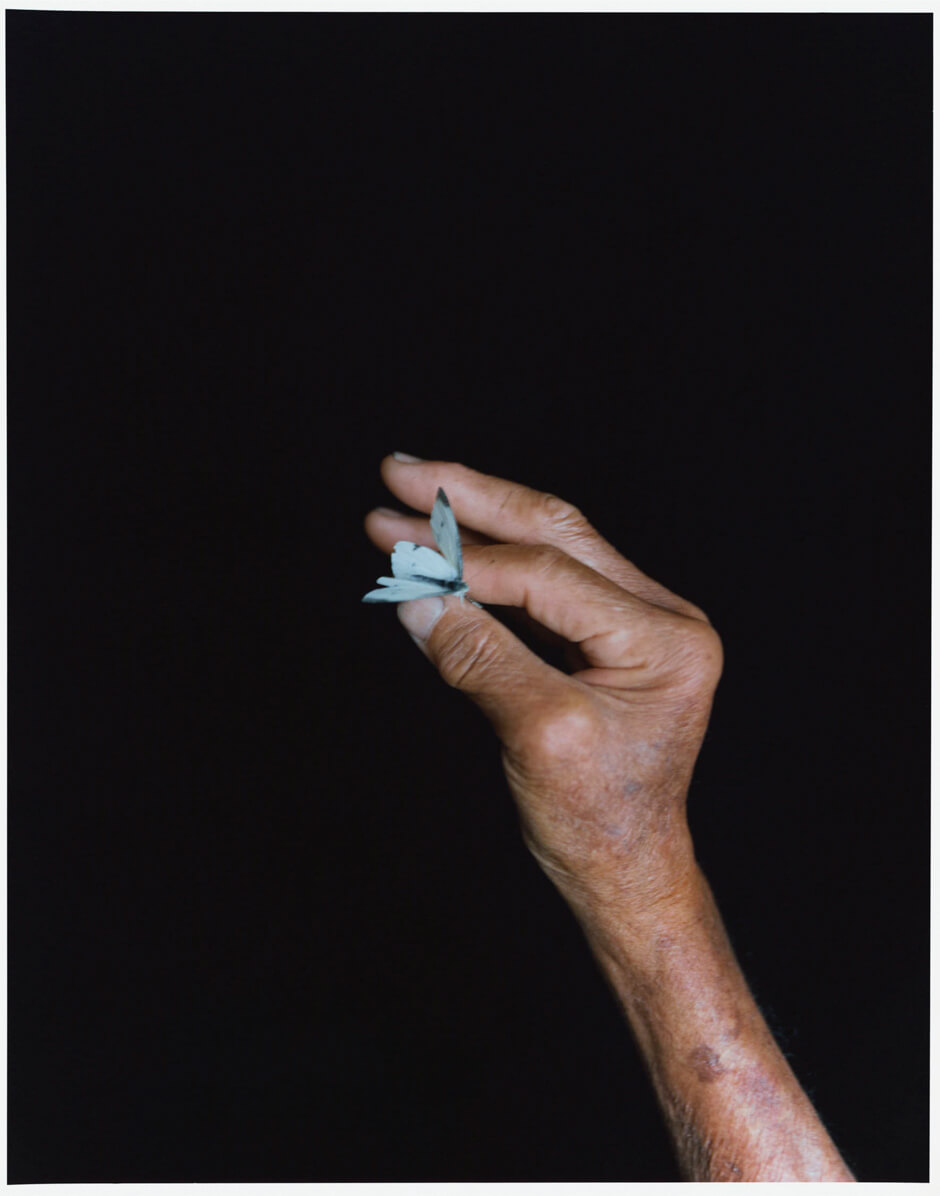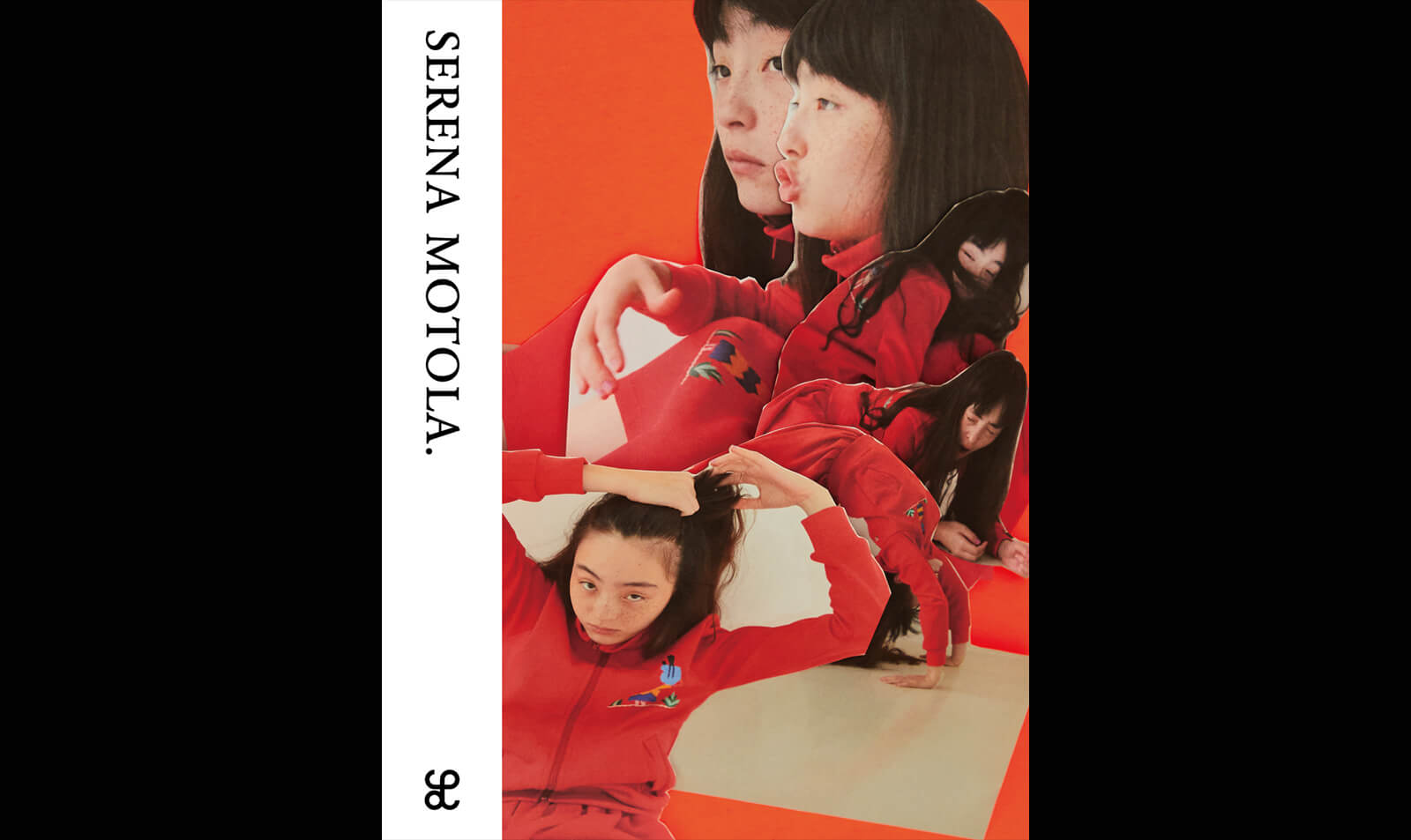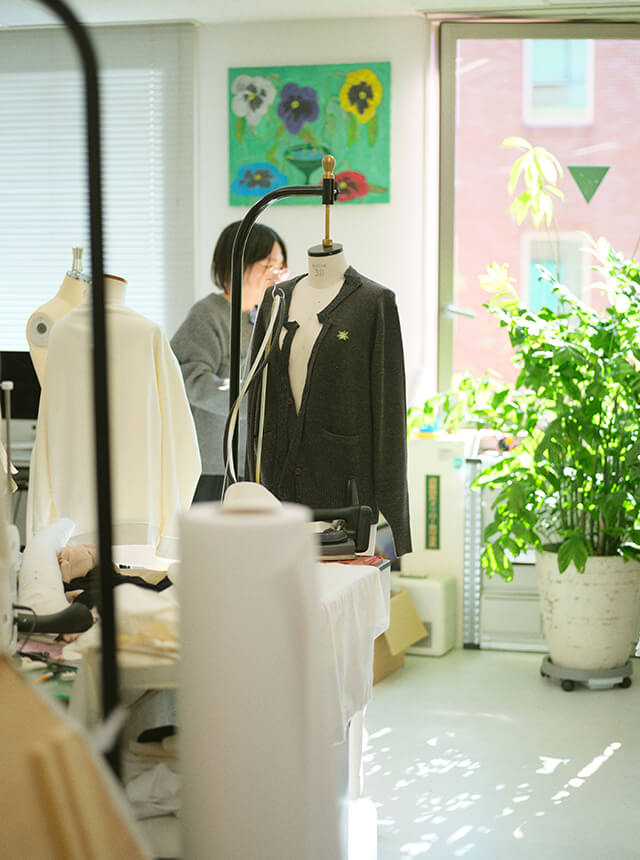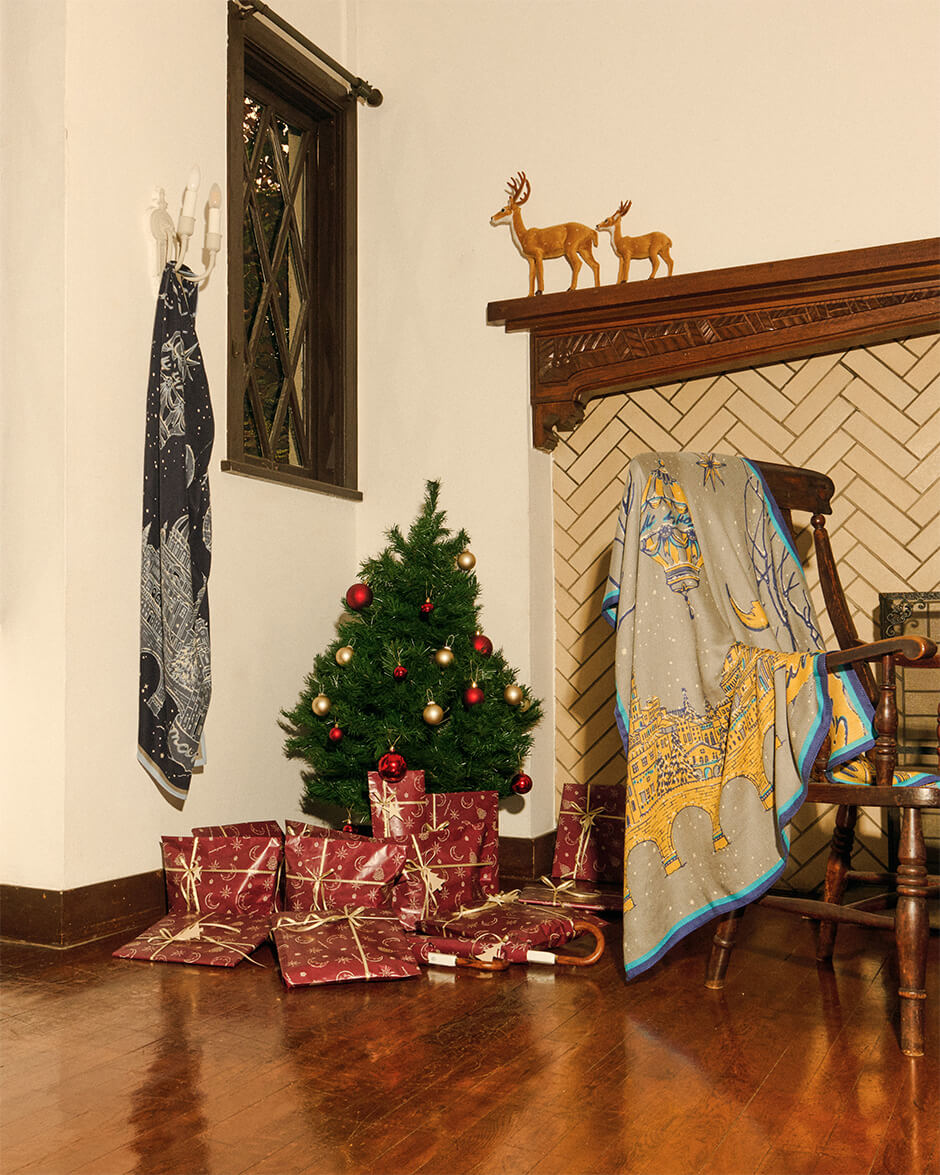出版プロジェクト「Lula BOOKS」の第2弾として、写真家 熊谷勇樹の作品集「Interlude」が5月21日(土)に発売。
同日に刊行を記念し、熊谷が師事していた写真家 横浪修を迎えたトークイベントを書店兼ギャラリー BOOK AND SONSのInstagramアカウント(@bookandsons)より7:30pmから配信する。
これに先駆けて、Lula Japanでは熊谷にスペシャルなインタビューを実施。
ひとつひとつ丁寧に語られていく記憶、感情を掻き立てるもの。
それらは一見リンクしていないようで、深部ではすべて重なっているのかもしれない。
予想を超えた関係性やストーリーが、ページをめくるたび
観る者の心に問いかけ、制限のない解釈へと繋がっていく。
写真の道を歩んで10年、1つの節目を迎える彼が感じているもの、
そして作品集に込めた率直な想いを伺った。

−まずはじめに、書籍「Interlude」についてお聞かせください。
今回1つの節目として作品集を出版されましたが、いつ頃から制作することを考えていましたか。
何かきっかけがあったのでしょうか。
写真を始めて10年経ったので、1回ひと区切りしたいと思っていました。
元々作家に憧れていたので、自分の作品をまとめたかった。
あと、次にやりたいことが出てきたので。
−今回の写真集に収められている作品は、人の身体や日常の一瞬と、散りばめられているイメージの中にも一貫したものを感じました。
この写真たちは撮りにいこうとして撮ったものなのですか?
この書籍に入っている写真は、1番古くて5年前のものになりますね。
波の写真やトンネル、女性のお腹。
写真はやっぱり記憶だなって。場所や撮り下ろした前後の瞬間とか、1個1個にまつわるエピソードをちゃんと覚えているんです。
モンシロチョウの写真は、あるおじいちゃんの家の近くの畑で撮ったもの。作物を食べてしまうので、捕まえている瞬間を撮らせてもらった。
ニューヨークや長崎に行った時、撮影でウラジオストクに訪れた時、誰かの事務所、前に住んでいた家。

感覚的にいいと感じたものや、心の内に掲げているテーマに触れる何かがあるとシャッターを押している気がします。そして精度の高いものへとまとめていく。
写真を残す行為は「選択」の連続だと思います。
まず撮影する段階で何かを選択してシャッターを押している。
何かをいいと思って、そこからさらに選んで、プリントをして、最後に選ばれてこの本にも入っている。
まとめた時に、改めて面白いなと感じました。
人の身体にもとても興味があります。綺麗だなと思う。
曲線や肌感、それは男性とか女性とか関係なく。
−いつもカメラを持ち歩いているのですか。
少し強迫観念もあります。撮らなきゃっていう。
仕事の時は感じていないけど、例えば山に登るとか、どこかに行く時は後から後悔するのが分かるから絶対に持っていきます。

−書籍のタイトル「Interlude(幕間)」に込めた想いは。
他にも候補があったのでしょうか。
昔、「タイトルは作品に大枠のルールを与える」と言われたことがあります。
言葉というもので、とっ散らかっているものに外枠を作ってあげる。
そうするとその中で観る人の解釈が増えるので、そういうつもりで考えると名づけやすいと、昔個展をやった時に言われて、確かにと。
人は言葉と紐づけて意味を探すので、それで「Interlude」になりました。
もう1つの候補に「You can see your breath. 」というものもありました。
息はある特定の環境だと視覚的に見えるけど、普段吐いている息は見えない。
ある特定の条件やきっかけで自分が呼吸していることを意識する。
結局その2つの言葉に共通しているのは何かの「間」なんですよね。
それらは僕の感覚だと似ている。
生き死にもそうだし、三途の川じゃないけど、宙ぶらりんな状態とか。
作品集には入れていないのですが、北海道でカヌーに乗った時の写真もありました。
とてもいい時間だった。船頭さんがいて、僕は漕いでも漕がなくても良くて。
朝6時くらいにボートに乗って、すごく綺麗で、本当に音がないんです。
静かで、何か聴こえるとしても鳥の声くらい。
たまに船頭さんが説明してくれて、そして船を漕ぐ音。
気が遠のく感覚。
座っているから水面が視点に近くて、無音の中、綺麗な景色があって。
「間」は、その感覚と似ている気がします。

−自分自身との対話として創作活動を行う方も多いですが、今回の制作でもそうした面があったのでしょうか。
そうですね。人の自意識は自分で自覚できるところはわずかで、残りのほとんどが無意識らしいです。
ということは、自分で自覚できていないスペースが大半を占めている。
例えば自分がこういう人間だと規定しても、それってすごく不確かなことで、自ら思っていることがすごく不安定だなと。
何かをはっきりさせるのは、すごく大変なことだと思います。
無意識から自意識に作用することはあっても、自意識から無意識に作用することはできない。
何かを決定していくことは大事であるけど、曖昧にしておくのは時にすごく良いことだと思うんです。
例えばこの写真は海岸を写したものですが、僕はホテルの部屋からカーテン越しに撮っている。
恐らくこんな感じではっきりさせないでベールに包んでおくことが、自分にとってある種のセラピーだったのではないかと。
この感覚を誰かに投げたい気持ちがありました。
国内だけでなく、海外にも。
言葉も文化も違う人がこの書籍を手にした時にどう思うのかなと。
自分の顔や何をやっているのかも知らない人がたまたま本屋で買ってくれて、それがその人の本棚にずっとあり続ける。それはすごく幸せなことで、ずっとやりたかった。
理解できないという意見も1つの正解で、分かりやす過ぎても良くないと思っています。
なので言葉にするのは避けたくなってしまう。
セラピーという言い方が適切かは分からないですが、こうしてまとめると自分の考え方とかものの見方とか、整理される感じはあります。

この書籍でも全体で一貫したテーマが「Interlude」で、間の感覚というか、意味も内容もバラバラだけど、なんとなく繋がっていると感じてくれることも正解。
「解釈」は何万通りのパターンがある囲碁や星の写真、宇宙など、なかなか理解が及ばないものというイメージがあって。
例えばこの手の写真も、手は人の身体で1番意思が反映される場所だと思うんです。
自意識から遠いものを撮りたいと感じていながらも、対の要素が入ることで面白くなっていく気がする。
そういった感覚が整理されていないだけで、きっと自分の中のどこかにあるのだと思います。
地続きで全然違うものを撮っていても、一貫している部分があって面白いです。
そして観る人によって捉え方が違うので、僕はそこに期待して投げています。
【“Interlude” by Yuki Kumagai Photo Exhibition】
DATE:5月21日(土)〜6月5日(日)
※水曜定休
TIME:12:00pm~7:00pm
PLACE:BOOK AND SONS
ADDRESS:東京都目黒区鷹番2-13-3 キャトル鷹番
ADMISSION FREE
【Yuki Kumagai × Osamu Yokonami Online Talk Event】
DATE:5月21日(土)
TIME:7:30pm〜
PLACE:BOOK AND SONSのInstagramアカウント(@bookandsons)にてライブ配信
※その他詳細情報は調整中となります。
Yuki Kumagai/熊谷勇樹:
1988年、静岡県生まれ。写真家。第6回写真「1_WALL」グランプリを受賞後、初の個展「そめむら」を開催した。写真家 横浪修への師事を経て2016年に独立し、以降はフリーランスとしてファッション誌や広告、アーティストのポートレートなど幅広い分野で活動中。奥行きのあるリリカルな写真表現は、静謐な空気の中に独特の迫力を感じさせる。
INSTAGRAM:www.instagram.com/yuuukikumagai
【Lula BOOKS “Interlude” by Yuki Kumagai】
RELEASE DATE : 2022年5月21日(土)
PRICE : ¥5,500(税込)
SPECIFICATION : ハードカバー / H250mm×W185mm / 104ページ
ISBN : 978-4-910889-01-6
PUBLISHER : SELEK LIMITED
AVAILABLE TO BUY FROM:
TOKYO
青山ブックセンター本店
銀座 蔦屋書店
ジュンク堂書店 池袋本店
代官山 蔦屋書店
なかなかの
二子玉川 蔦屋家電
本屋B&B
bonjour records 渋谷スクランブルスクエア店
BOOK AND SONS
shashasha
SHIBUYA TSUTAYA
NAGANO
軽井沢ニューアートミュージアム
KYOTO
ホホホ座 浄土寺店
OSAKA
梅田 蔦屋書店
BOOK OF DAYS
FUKUOKA
本屋青旗 Ao-Hata Bookstore
INTERNATIONAL
moom bookshop
treelikeswater
その他全国書店・CDショップ・オンライン書店など
ONLINE SHOP :
通常本
lulajapan.stores.jp/items/62665e0ae3bbd1587ed021dc
サイン本
※なくなり次第販売終了
lulajapan.stores.jp/items/627dba6ebc8f397e6a05bb7e

Photographer Yuki Kumagai’s photo book “Interlude” will be released on May 21 as the second volume of the publishing project “Lula BOOKS”.
On this day, to celebrate the publication, a talk event with photographer Osamu Yokonami, whom Kumagai studied under, will be broadcasted from 7:30 pm on the Instagram account of bookstore and gallery BOOK AND SONS’ Instagram account (@bookandsons).
Prior to this, Lula Japan conducted a special interview with Kumagai.
Memories that are carefully told one by one, and things that stir your emotions.
They are apparently not linked, but deep down they may all overlap.
Unexpected relationships and storylines question the viewer’s mind with every turn of the page, and leads to unrestricted interpretations.
We asked him about his feelings as he approaches a milestone in his 10-year career in photography, and his candid thoughts on this photo book.
First of all, please tell us about your book “Interlude”.
When did you start thinking about publishing your first photo book?
Was there any inspiration?
It has been 10 years since I started photography, so I wanted to bring them together at this point.
I had always longed to be an artist, so I wanted to assemble my own works.
Also, I came up with something else I wanted to do next.
Throughout the works in this photo book, there was a consistency between the human body, the moments of daily life, and the images scattered throughout the collection.
Were these photographs taken in an attempt to take them?
The oldest photograph in this book was taken 5 years ago.
Pictures of waves, tunnels, or woman’s stomach.
I thought again that photographs are memories. I can remember the episodes related to each of them, such as the places they were taken or the moments before and after each shot. I again realized it’s interesting.
This photograph of a cabbage butterfly was taken in a field near my grandfather’s house. They eat the crops, so I took the moment of catching them.
This picture was taken in New York, this in Nagasaki, Vladivostok where I visited for a photo shoot, someone’s office, and the house I used to live in.
I think I press the shutter when there is something that feels good to my sense or something that touches on a theme that I hold inside. And then I organize them into a higher level of accuracy.
I think the act of taking photographs is a sequence of “selection”.
First of all, at the stage of taking a picture, I’m selecting something and pressing the shutter.
I feel nice about something, then I select from it, print it, and the pictures included in this books are the ones I finally chose to put in.
After assembling them all together, I found it interesting again.
I’m also very interested in human bodies. They’re beautiful.
For example the curves or the texture of the skin, no matter it’s male or female.
Do you always carry your camera with you?
I feel a bit forced about it. Like “I have to take pictures”.
I don’t feel this way when I’m at work, but when I’m going somewhere for private, like climbing a mountain for example, I always take my camera with me because I know I’ll regret it later if I don’t.
What are your thoughts behind the title of your book “Interlude”?
Were there any other options?
I was once told that the title gives the work a general rule.
The word creates an outline to what is cluttered.
Then the viewer’s interpretation will increase in that context, so it’s easier to name it if you think this way.
I was told this when I did a solo exhibition a long time ago, and I thought it’s right.
People search for meanings by linking them to words, so I named this book “Interlude”.
Another option was “You can see your breath”.
Breath is visible in certain environments, but what we normally exhale is not.
You only become aware that you’re breathing when you’re under certain conditions or given any triggers.
After all, what those two words have in common is a “space” between something.
These two are similar to me.
So is life and death, or not to say Sanzu River, but a state of pendency.
There’s also a picture taken on a canoe ride in Hokkaido.
I had a really good time. There was a boatman and I could chose to row or not to.
I took on the boat around 6am. It was very beautiful and there’s no sound at all.
So quiet, the only sound I could hear was birds singing.
Sometimes the boatman gives me some explanations, and I listen to the paddling sound. I could feel myself fainting away.
The water surface was close to my viewpoint since I was sitting down, and in the silence, I could see the beautiful view.
“Space” seems to be similar to these feelings.
Many people create as a kind of therapy or dialogue with themselves. Were there these aspects in this production as well?
Yes, it is said that people can only be aware of 30% of their self-consciousness, and the remaining 70% is unconscious.
This means there’s 70% of the space you cannot be aware of.
For example, even if I define myself as a certain type of personality, it’s so unsure. What I think about myself is so unsteady.
I think it is very hard to make something clear.
Unconsciousness may affect self-consciousness, but self-consciousness can’t affect unconsciousness.
To make decisions about something is important, but I think it’s sometimes very good to leave things vague.
For example this is a picture of a beach, which I took from behind the curtains of a hotel room.
Perhaps to keep things veiled like this and not making them clear was the therapy for me.
I felt like I wanted to share this feeling with somebody else. Not only in Japan but also abroad.
I wondered what people from different languages and cultures would think when they get this book.
People who don’t even know what I look like or what I do happen to buy my book at a bookstore, and it stays on their bookshelf forever.
I would be very happy about that, and that was something I’ve always wished for.
If there are opinions that they don’t understand my idea, that’s also correct, and I think my works should not be too obvious.
That’s why I’m tempted to avoid putting it into words.
I’m not sure if it is appropriate to call it a therapy, but there’s a feeling that the way of thinking or looking toward things being organized when I bring them all together like this.
“Interlude” is the consistent theme throughout this book. Meanings and contents are disparate, but like a sense of “space”, it is also right to feel some kind of connection between them.
I have an image that “interpretation” is something that is not easily understood, like the Go games with tens of thousands of patterns, the pictures of stars, the universe, etc.
For instance, this is a picture of a hand, and I think hands are the place on human body where our wills are reflected the most.
Although I attempt to shoot something far from self-consciousness, putting in opposite elements seems to make my works more interesting.
I’m sure that such senses exists somewhere inside of me, it’s just not organized yet.
It’s intriguing that there is always somewhere consistent even if I’m shooting totally different things contiguously.
Different viewers see in different ways, and that’s what my works count on.
SHARE
RELATED ARTICLES
LATEST TOPICS
PICK UP
-
- Beauty
- 09.Jan.2026
-
- Beauty
- 08.Jan.2026
-
- Fashion
- Art&Culture
- Beauty
- Encounter
- 07.Jan.2026
-
- Fashion
- 05.Jan.2026
-
- Art&Culture
- 26.Dec.2025
-
- Beauty
- 24.Dec.2025
-
- Encounter
- 29.Dec.2025
-
- Encounter
- 06.Jan.2026
-
- Fashion
- 11.Dec.2025
-
- Fashion
- 10.Dec.2025
-
- Encounter
- 18.Dec.2025
-
- Fashion
- Art&Culture
- 22.Dec.2025
-
- Encounter
- 02.Dec.2025
-
- Fashion
- 13.Nov.2025
-
- Fashion
- 03.Dec.2025
-
- Fashion
- Art&Culture
- Beauty
- Encounter
- 01.Oct.2025
-
- Fashion
- Art&Culture
- 04.Nov.2025
-
- Fashion
- 14.Oct.2025
-
- Fashion
- 31.Oct.2025
-
- Fashion
- 08.Sep.2025
-
- Art&Culture
- 01.Aug.2025
-
- Fashion
- Art&Culture
- 13.Jun.2025
-
- Fashion
- Art&Culture
- 13.Jun.2025
-
- Fashion
- Art&Culture
- 04.Jun.2025
-
- Fashion
- Art&Culture
- Beauty
- Encounter
- 22.Apr.2025




































